Content
- 1 Tips
- 2 Warnings
- 3 What do you need
- 4 Is it possible to grow lettuce on a windowsill
- 5 The best varieties of lettuce to grow at home
- 6 Choosing a container for sowing and preparing the soil
- 7 Sowing seeds
- 8 Watering
- 9 Top dressing
- 10 Lighting
- 11 Loosening
- 12 Harvesting
- 13 How to grow salad at home
- 14 A versatile iceberg
- 15 Greenhouse salad
- 16 Photo of the process of growing lettuce
- 17 Preparing a place for a room "bed"
- 18 Sowing rules and norms
- 19 Crop care and harvest
- 20 Features of growing watercress
3 parts: Sowing lettuce seeds in pots Seeding care Harvesting
Whether you run out of space in your garden or just want to grow lettuce all year round, this plant is easy and simple to grow at home. Since lettuce thrives at room temperature and direct sunlight, it adapts well to home conditions and survives with basic care. Even if you've never kept any plants in your home before, you won't need anything more than regular potting soil, water, fertilizer and lighting, or a sun window to keep your plants strong. A month after planting the seeds, it will already be possible to harvest the lettuce!
Part 1 Sowing lettuce seeds in pots
- Choose a salad variety that feels good at home.
While most lettuce varieties can be grown at home, some will make it easier for you to succeed than others. Purchase any of the following salad varieties from your garden center or seed store:
- "Moscow greenhouse";
- "Emerald Lace";
- "Parliament";
- "Dubrava";
- "May";
- Paris Green;
- Bettner;
- "Merlot".
- Fill a pot with forcing soil.
Forcing the seed should be lightweight to promote root growth and to provide good drainage without allowing water to stagnate. If you cannot find a special soil for forcing seeds, you can
cook yourself
from equal parts sphagnum or coconut fiber, vermiculite and sand.
- Each plant needs about 10-15 cm of soil wide and about 20 cm deep. Choose a pot for planting that meets these requirements.
- Purchase a pot with drainage holes at the bottom. Place a drip tray underneath to allow water to drain into it.
- You can find ready-made forcing mix at most gardening stores and garden centers.
- Sow the seeds into the soil about 2.5 cm apart.
Dig a hole 1–1.5 cm deep in the ground and place the lettuce seeds in it at a distance of about 2.5 cm from each other. Limit yourself to four seeds per pot so you don't have to thin out the seedlings when they emerge. If you want to plant more than four seeds, prepare several pots beforehand.
- Sprinkle the seeds lightly with soil and water.
Take a handful of soil and sprinkle it with the salad seeds carefully. Fill a spray bottle with water and gently moisten the soil to avoid washing out the seeds.
- If you don't want to wait for shoots, plant lettuce seedlings right away.
If you don't have the patience to wait for the shoots to appear, you can plant the salad with seedlings. Use the same technique as if you were planting seeds: Plant no more than four plants in pots.
- Ready-made salad seedlings can be bought from the hands or searched in garden centers.
Part 2 Seedling care
- Use a spray bottle to moisten the potting soil daily until shoots appear.
When the seeds germinate, the lettuce will need watering equivalent to about 25 mm of rain per week. Use your finger to check the soil twice a day and water it when it is dry.
- The soil should remain moist, but not waterlogged.
- Another way to check the moisture level is to raise the pot. If it is heavy, then the soil is saturated with water.
- Grow lettuce at room temperature.
Lettuce grows best at 18-21 ℃. Turn on air conditioning or heating as needed to keep your plants at the most stable temperature possible.
- If the outside is warm or cool enough, you can periodically expose the plants to fresh air.
- Place the salad pots on a sunny window or under a fluorescent light.
Lettuce grows best in direct sunlight. If you live where there is very little sun, buy a fluorescent lamp from a garden center and hang it about 30 cm above the salad.
- The salad requires a minimum of 12 hours of direct sun per day, but 14-16 hours is preferred.
- Keep in mind that plants that grow under artificial light usually require more hours of backlighting than under direct sunlight. Be prepared to provide artificial lighting around 14-16 hours, not 12+.
- Water the salad when the leaves begin to wilt.
Lettuce leaves begin to wither noticeably when the plant lacks water. If you notice that the leaves have wilted, pour over the lettuce so that the soil becomes moist again, but not waterlogged and soggy.
- The higher the air temperature, the more often you need to water the salad.
- Feed the lettuce three weeks after planting.
Lettuce needs nitrogen fertilizers to grow, so spray the seedlings with liquid fertilizer three weeks after planting the seeds or when the first leaves appear. Spray the fertilizer closer to the soil to avoid splashing directly onto the leaves and causing burns.
- Use a liquid fertilizer. Granular fertilizers must be mixed with the soil.
- Organic alfalfa flour is rich in nitrogen and can serve as a long-term, gradual fertilizer, which is great for salad dressings.
- Emulsified fertilizers based on fishmeal or seaweed can also be used, but these can give off a pungent odor and are generally not recommended for planting plants such as lettuce.
Part 3 Harvesting
- Start harvesting lettuce 30–45 days after planting.
On average, lettuce takes 30–45 days to grow from seed into a mature plant. Check the calendar box to start harvesting in about 30 days.
- Homemade lettuce continues to grow and mature, so after you pick the leaves from it for the first time, you can continue to harvest later.
- A grown salad at home usually grows up to 10 cm in height.
- Harvest in the morning.
In the morning, the plants are most saturated with moisture and are stronger in themselves. If possible, harvest lettuce early in the morning, before lunchtime, to keep your plantation healthy.
- If you are unable to harvest in the morning, refrain from doing so at lunchtime, when the plants are least saturated with moisture.
- Cut only the outer leaves from the bushes.
Don't pluck the entire plant. With the gradual collection of the leaves, the plant can benefit you for several months. Cut off 3-4 outer leaves with a pair of garden shears or clippers, allowing the plant to recover and grow further.
- Do not cut the core of the salad. Limit yourself to only the outer leaves to maximize your potential yield.
- Store the harvested salad in the refrigerator for 5-8 days.
Depending on the variety, lettuce can be refrigerated for 3 to 10 days.Check how long your particular variety can be stored by placing it in the refrigerator, and try to use the salad before it dries up.
- If you know that you will not be using the salad for food in the next 5-8 days, wait a few days before harvesting.
- Re-harvest every two weeks.
The plant takes about two weeks to recover and grow new leaves before they can be harvested again. From the first harvest, continue to harvest the leaves at intervals of two weeks to keep the plants healthy and grow more leaves.
- Be sure to wait at least two weeks before re-harvesting young plants as they may take longer to recover from the first leaf pruning.
- Sow the lettuce additionally every two weeks to extend the harvest season.
Tips
- Instead of growing lettuce at home, you can put a container of lettuce on your front porch and care for it in the same way.
- If you have free space in your garden or move to a warmer climate, then you can always transplant your homemade salad outside.
Warnings
- Do not store lettuce frozen. Frozen salad loses its texture and flavor.
What do you need
- Lettuce seeds or seedlings
- Soil for forcing seeds
- Pot
- Spray
- Water
- Backlight (optional)
- Garden or regular shears
- Nitrogen fertilizer
Article Information
This page has been viewed 60,161 times.
Was this helpful?
The salad contains a huge amount of nutrients. Therefore, many lovers of this greenery want to grow it not only in their summer cottage, but also at home. Is it possible to grow lettuce from seeds on a windowsill at home? This will be discussed further.
Is it possible to grow lettuce on a windowsill
Lettuce can be grown at home as well. Both in winter and summer. But this plant at home requires a lot of attention.
For his growth needs a lot of sunshine... On short winter days, it needs additional lighting. If there is not enough light, it begins to bloom early. Does not tolerate drought, heat. In this case, the leaves become bitter. Beginners should not take on growing head forms in an apartment. They are very moody.
This is an early maturing culture. To constantly have greens at home, it must be planted 1 time in 10 - 14 days.
The best varieties of lettuce to grow at home
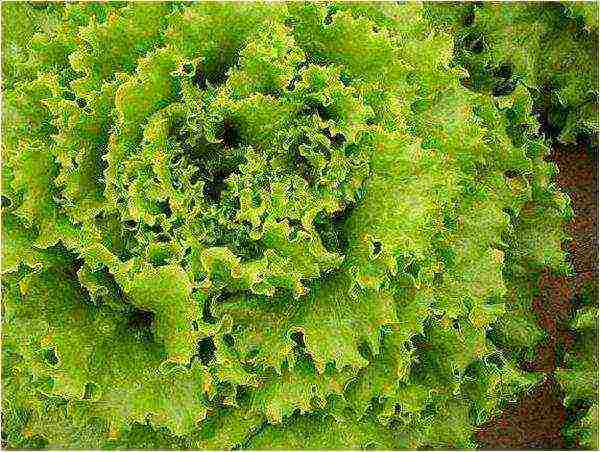 Batavia is the most suitable salad variety for an apartment
Batavia is the most suitable salad variety for an apartment
The most suitable variety for an apartment is considered Batavia... In grocery stores, it is most often sold.
It grows even without additional illumination. Can withstand short-term drought, high air temperatures.
The most famous varieties for cultivation on the windowsill:
- Lollo rossa
- Emerald lace
- New Year
- Lollo bionda
- Vitamin
Lolla rossa is distinguished by its brown head, curly light green leaves. Counts the most vitamin... It has a delicate taste.
Lolla bionda - the most beautiful... The leaves are wavy. Yellow-green color. The taste is pleasant, bitter with a nutty flavor.
The apartment also grows watercress... This is a moisture-loving plant. The best varieties for the windowsill:
- curly;
- pepper;
- broadleaf;
- ordinary.
 Broadleaf watercress
Broadleaf watercress
Choosing a container for sowing and preparing the soil
Lettuce roots do not go deep into the soil. Large containers are not needed to grow it. Better to choose a plastic pot. The capacity should be volume of 1-2 liters... Depth - 10 - 35 cm. Depending on the variety. There should be holes at the bottom of the container.
The soil can be purchased at the store or used garden soil. Acidic soil is not suitable for planting. Better option - a mixture of sod land, humus, sand... Another option is garden soil, coconut fiber, vermicompost.The ratio of the latter two is 2: 1.
For sowing, it is necessary to use drainage: pebbles, expanded clay, broken brick, small stones.
When using garden soil, the soil should be disinfected with a weak solution of potassium permanganate. The soil is filled into the pot, not reaching the edges of 2.5 - 3 cm.
Some varieties can be grown without soil... One of them is watercress. For cultivation, they use such improvised materials as a sponge, cotton wool, paper.
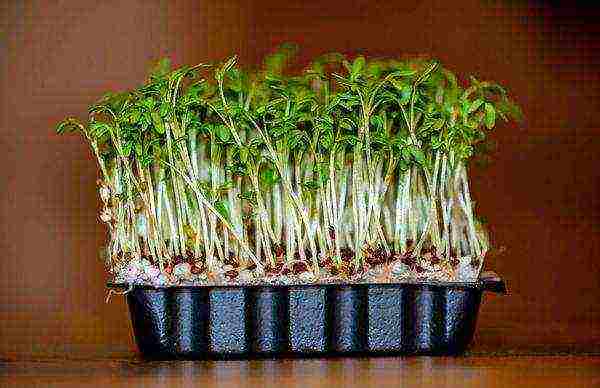 Some lettuce varieties can be grown without soil - on paper or cotton wool
Some lettuce varieties can be grown without soil - on paper or cotton wool
Sowing seeds
- Before sowing, seeds are disinfected in a solution of potassium permanganate. Time is 2-3 hours.
- A drainage layer is placed on the bottom of the pot.
- The drainage is covered with earth. Watering.
- Make a groove. Depth - 5 mm... Distance between rows - 10 cm.
- Seeds are placed in the groove. Fall asleep with a small amount of earth. Slightly compacted.
- Cover the container with a package - create a greenhouse effect.
- They are placed in a dark place.
- When the first shoots appear, the bag is removed. Transferred to the windowsill.
The first shoots can be seen after 4 - 5 days... You need to protect it from direct sunlight. On bright sunny days, it is necessary to shade it - the leaves can burn.
The salad loves warmth. For its good growth, a temperature of 17-21 degrees is required. During a strong drop in temperatures outside, the container with plants should be removed from the windowsill.
Culture needs thinning... This is done 2 times:
- After 1 week, as the first shoots appear; Leave a distance of 1–2 cm between them.
- When 2 true leaves are formed; Distance - 4-5 cm.
If the lettuce grows densely, you will not be able to get a good harvest.
 Lettuce needs to be thinned twice
Lettuce needs to be thinned twice
Watering
Watering should be abundant... With insufficient soil moisture, arrows begin to form earlier than usual. Watered with settled water 1 time in 1 - 2 days.
If the container is on the south side, more often. In winter - less often. It is impossible to moisturize the soil too much - the roots and lower leaves will begin to rot. The air in the room should be humidified. The leaves are sprayed with water from a spray bottle.
Top dressing
Feed Once every 1.5-2 weeks... Fertilizers are suitable for indoor plants. It is a fast growing culture. If fertile soil was chosen for planting, it grows well without them.
You cannot apply a large amount of nitrogen fertilizers - lettuce is capable of accumulating nitrates. If you use a potassium iodide-based top dressing, you can get a plant with a lot of iodine in the composition.
Lighting
Light-loving plant. In winter, in short autumn - spring days, you need to use additional lighting - fluorescent lamps. You need to turn them on for 2 - 5 hours. Hang it at a height of 50 - 60 cm above the plant.
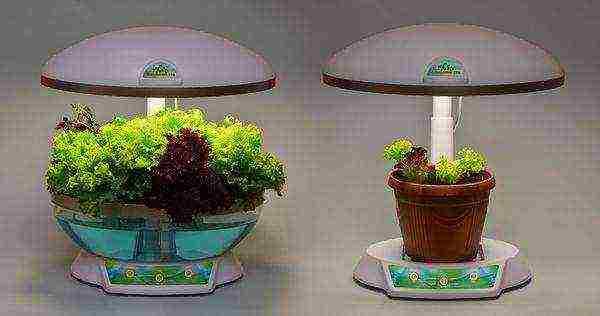 Daylight hours when growing lettuce should last 12-14 hours
Daylight hours when growing lettuce should last 12-14 hours
In total, daylight hours should last 12-14 hours... It is impossible to highlight during the day. The greens need to rest.
If it is not possible to add additional lighting to the plant, it is best to plant it at the end of winter.
Loosening
Lettuce has very fragile, superficial roots. Loosen the ground under the seedlings it is forbidden.
Harvesting
Greens grow quickly. It can be harvested over a period of several weeks. Plugged out by the roots or the outer leaves are torn off... Arrows form after 3 to 5 weeks. The plant is removed. Other seeds are sown in its place.
Experienced gardeners plant salad every 10 days... 40-50 grams of greens are obtained from one plant. But it all depends on the variety.
Lettuce can be grown both outdoors and at home. But when planting it in an apartment, you need to remember that it requires daily care.
- This is a moisture-loving plant. The soil should always be slightly damp. But excess moisture can kill him.
- The best place is a windowsill on the south, southeast side. It is impossible to grow it without enough light at home.
Growing fast. Doesn't take up much space. But you need to choose the right variety for the pot.
Natural vegetables are a storehouse of essential vitamins and minerals that a person needs at any time of the year. I want to be sure that the eaten product will be beneficial.
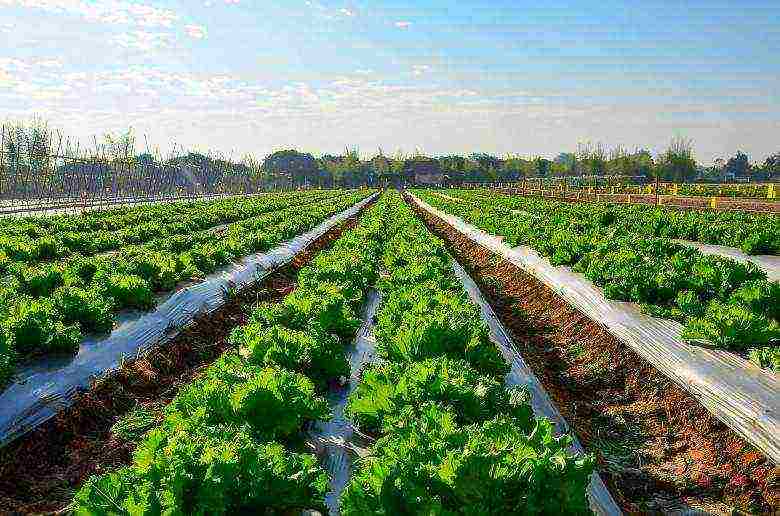
But vegetables on store shelves are often grown on nitrates, so cultivating vegetables at home is popular both among people who carefully monitor their health and among gardeners. This exciting process will not only allow you to eat right, but also have an interesting time.
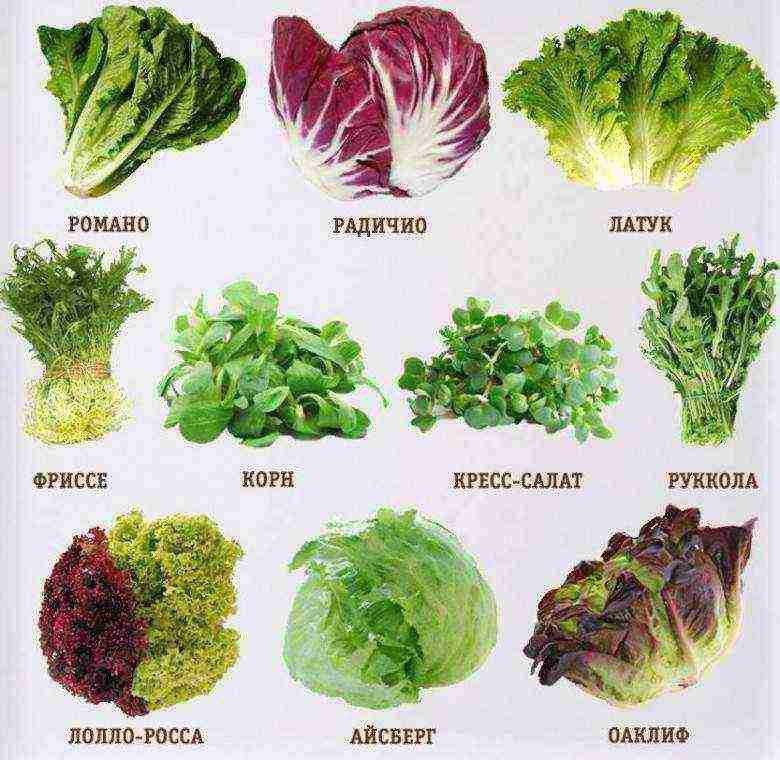
At home, lettuce is the most unpretentious and convenient plant for nursing. It is an annual plant distributed throughout the world. It is grown by the seed method under almost any conditions.
How to grow salad at home
Growing conditions for lettuce must meet certain requirements. The place where the plant will be placed must be accessible to light, especially in winter. But you should not allow bright sunlight to directly hit the salad.
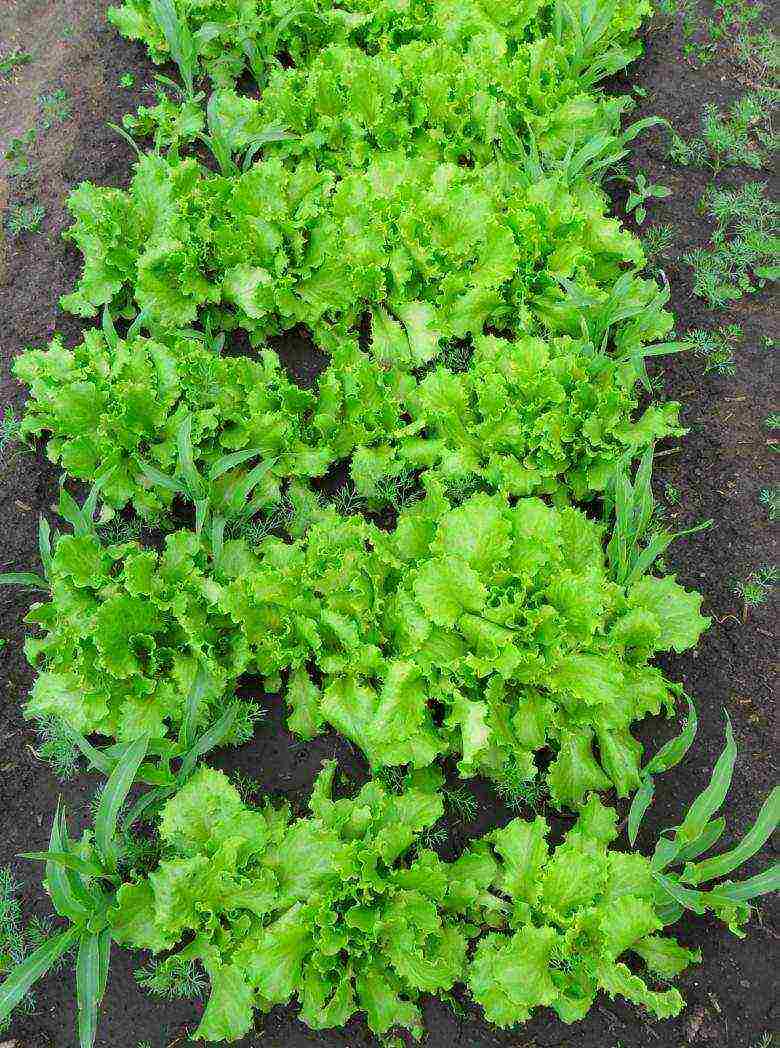
The depth of the container for planting should be 10-12 cm, square shape 60 by 60 cm. You can create the necessary soil yourself from one part of river sand, one part of peat and two parts of humus earth.

Small pebbles or expanded clay are placed at the bottom so that abundant moisture does not collect in the soil. The optimum temperature is 16-20 degrees. Drying out or excessive moisture of the soil must not be allowed.
For a frequent harvest at home, lettuce is grown in a pair of containers for several batches. Seeds are sown with a break of 10-15 days.
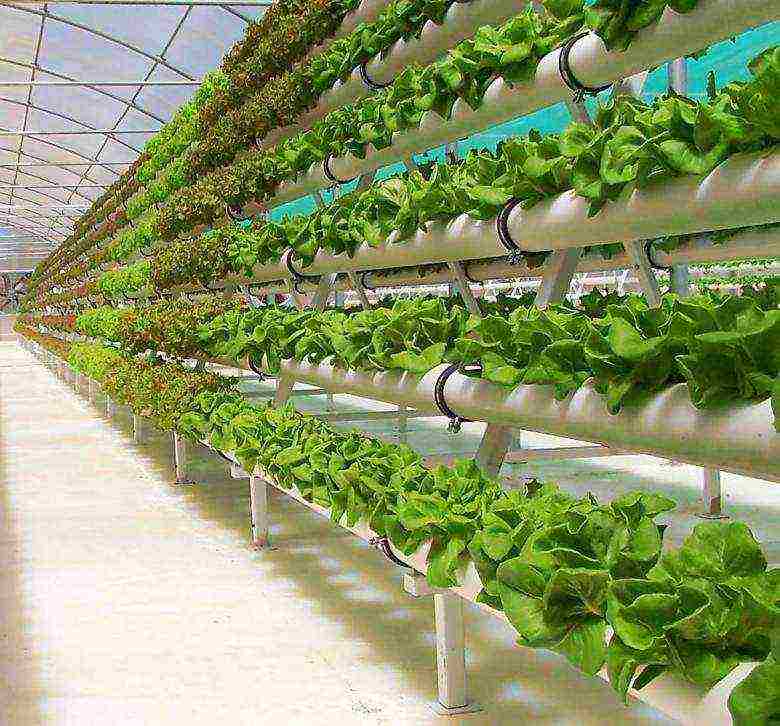
Removing lettuce from seeds begins with preparation. The moistened earth base is pressed a little by hand and the culture is sown there. Two grams by ten centimeters squared. You can sow the area in rows with a distance of 6-12 cm, depending on the variety.

When all the seeds are in the ground, you need to cover them with a layer of soil of 0.5-1 cm.Then they are sprinkled with warm water at 30 degrees Celsius and rearrange the containers in a cool place without access to light for 7 days.
Once every 2-3 days, you need to moisten the ground with a sprayer, and when sprouts appear, place the box in a bright place or under a fluorescent lamp.
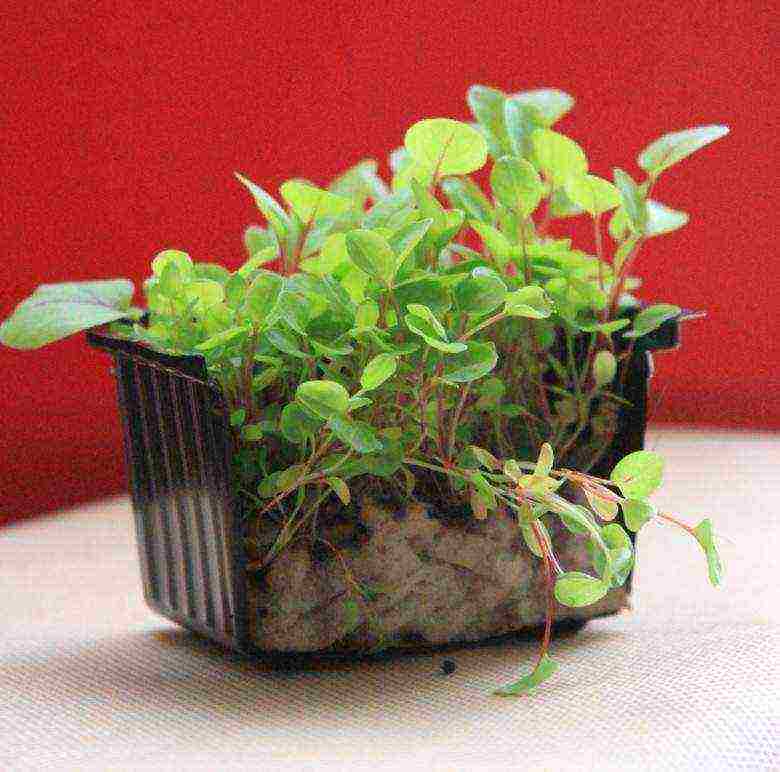
When the plant has two leaves, the seedlings should be transplanted at a distance of 7-9 cm.
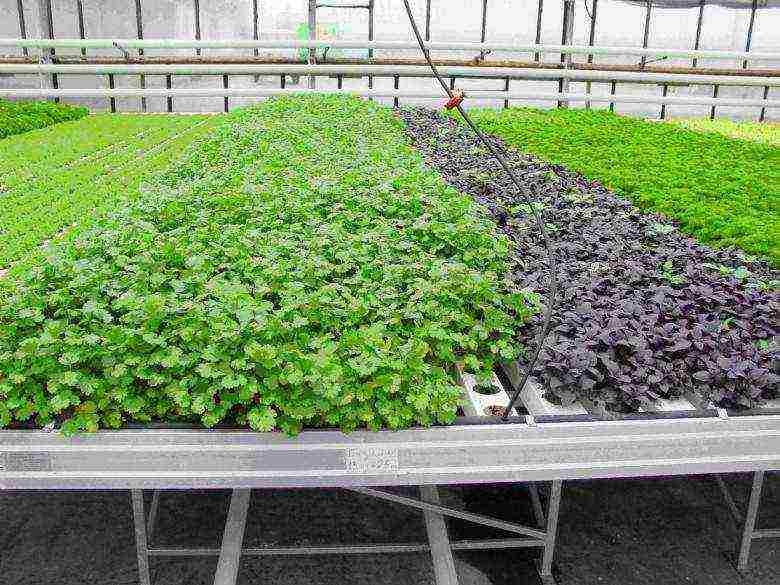
If you follow all the instructions, after 14-20 days the salad will be ready for collection and consumption.
A versatile iceberg
Iceberg lettuce is suitable for breeding in any conditions. It will grow well in a summer cottage, in a greenhouse and in an apartment on a windowsill.
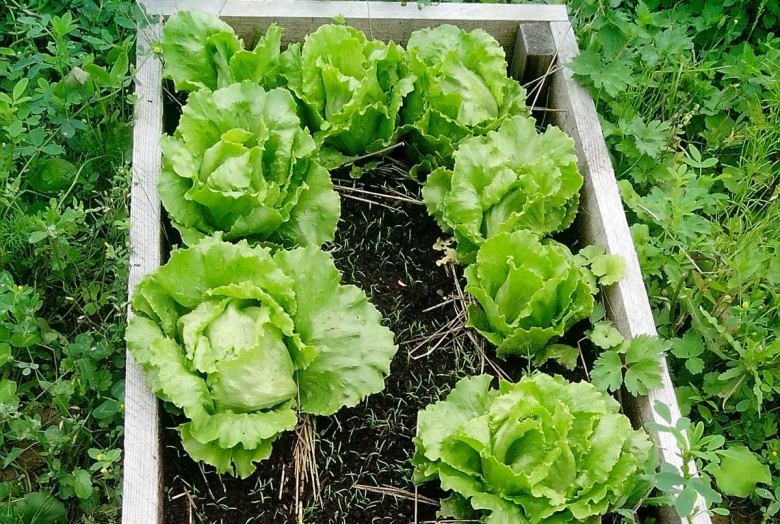
Heads of lettuce do not take root in the heat, so it is better to plant the iceberg in late autumn, spring or winter in greenhouse conditions.
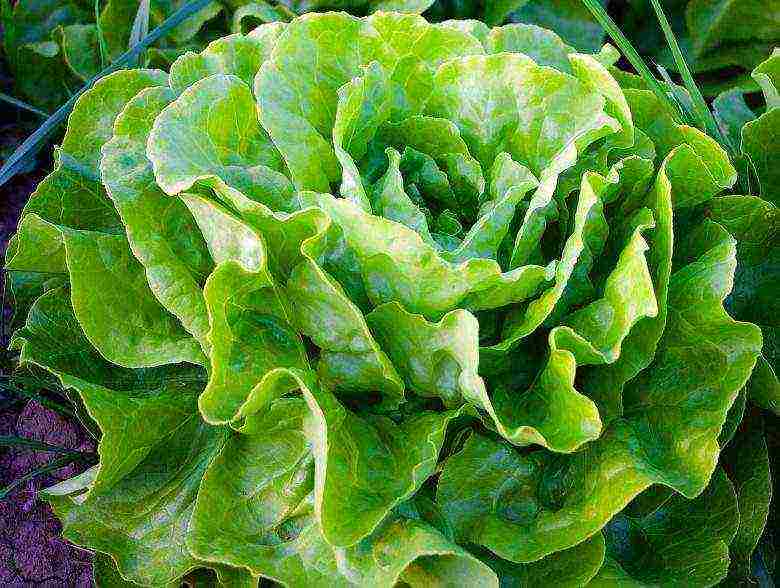
Growing iceberg lettuce requires several subtleties to be considered. The day before planting, you need to place the seeds in water.
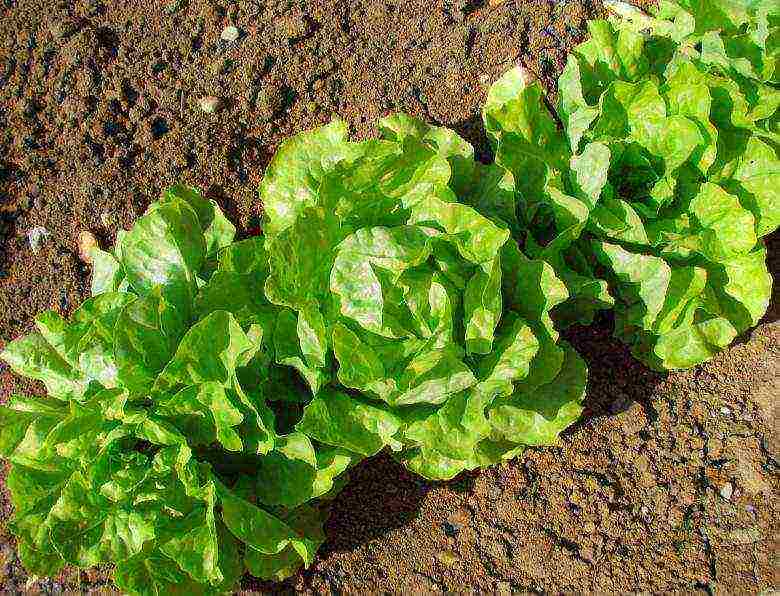
Before sowing, the site is carefully prepared. It is dug up, humus and fertilizers are introduced, if necessary, ash and lime to lower the acidity. Seeds are applied to a depth of 1 cm, keeping an intermediate distance between rows of 30-40 cm. Then it is imperative to water the beds and cover them with foil.
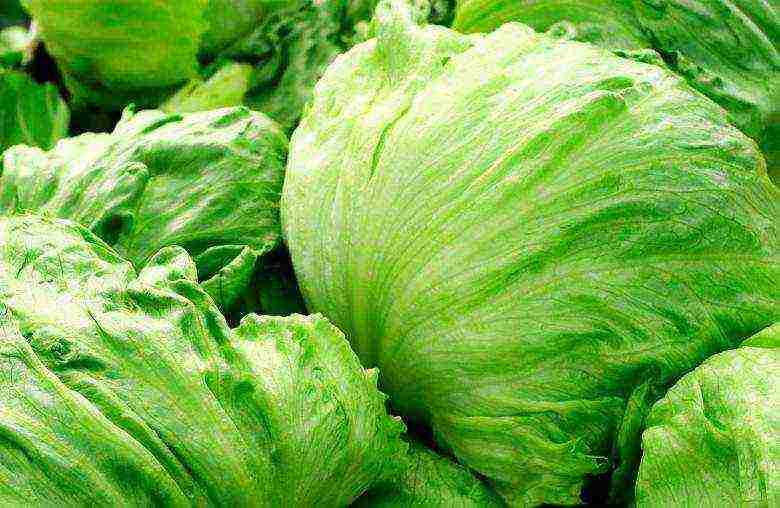
With a frequency of several days, the salad must be ventilated. When sprouts appear, they are transplanted 30 cm apart.
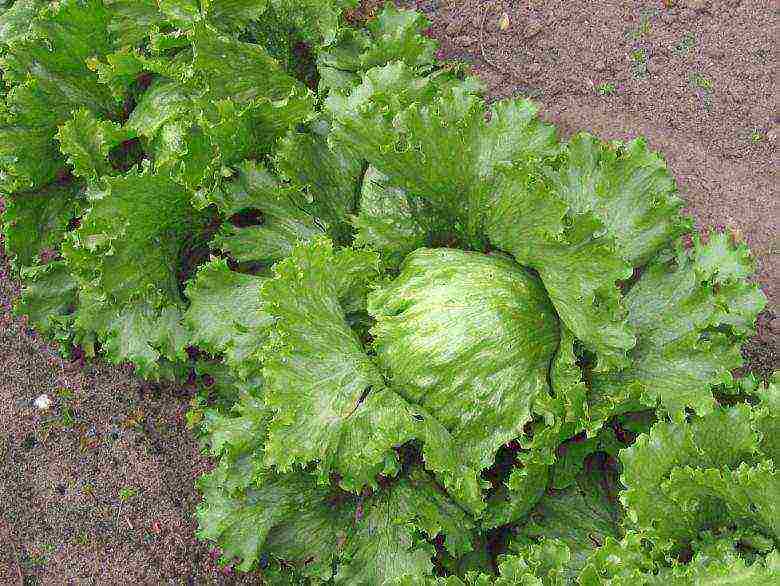
When caring for an iceberg, you need to keep the soil moist and plowed. Three weeks after sowing, you need to loosen the ground for the first time. And then after each watering.
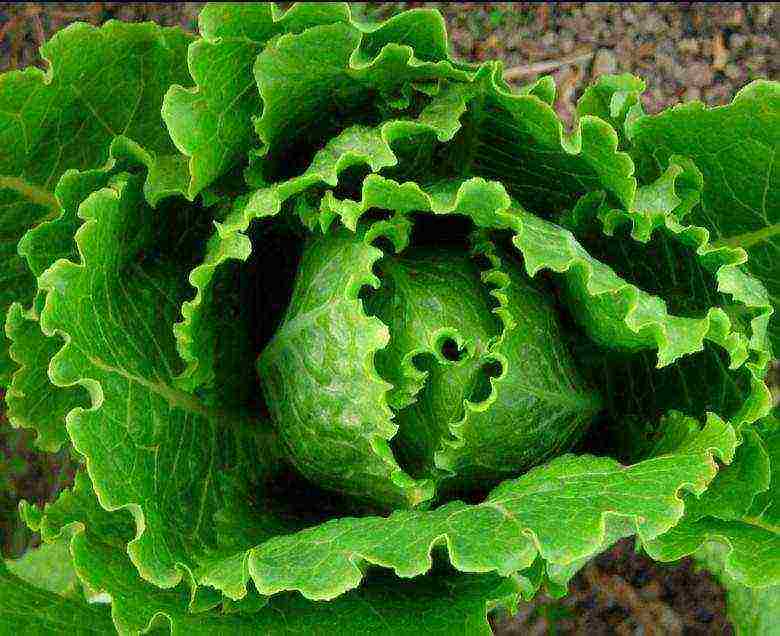
It is also necessary to remove weeds and apply top dressing. With systematic care, the crop will sprout in 45-80 days.
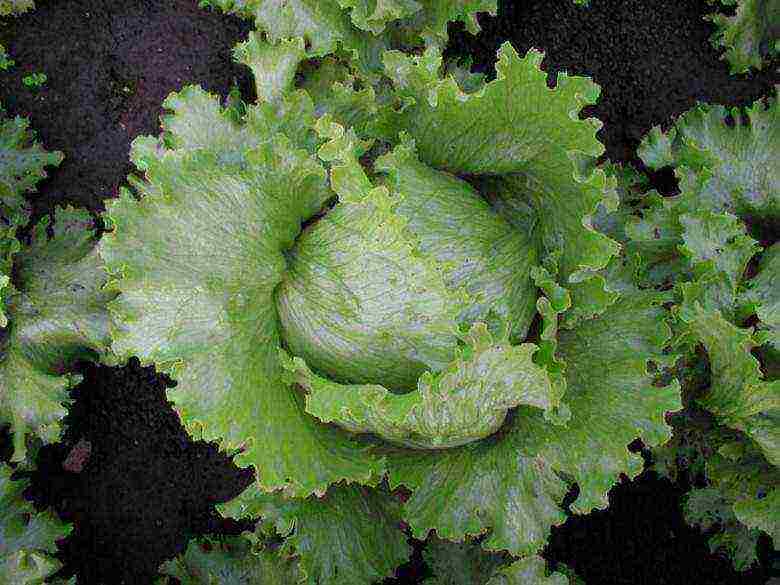
Landing and caring for an iceberg in the open field does not differ from greenhouse care. But special attention is paid to seedlings.
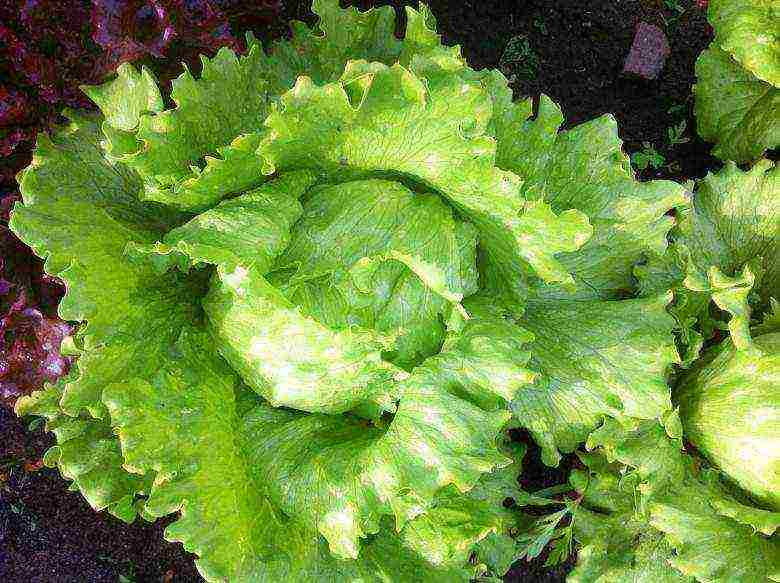
Planting is done in peat tablets. Put 2-3 seeds in one. When all the tablets are filled, they are placed in a container. Germination lasts 4-5 days.
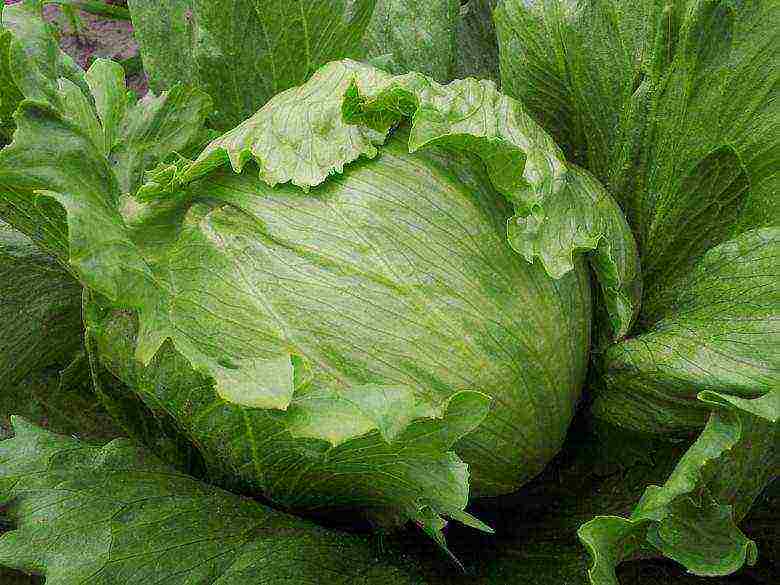
In open ground, planting is carried out in the spring months, when the seedlings reach 8-10 cm in height. In a warmer period, you can plant it after 3 weeks.
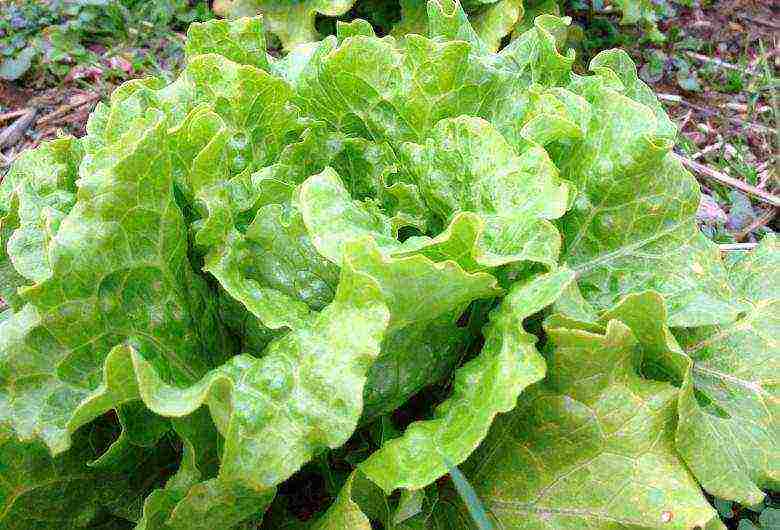
But first, the culture is tempered. Containers with seedlings are placed in fresh air for 2 days. After all the manipulations, the iceberg is planted on the dug up and fertilized bed. If necessary, cover with foil with periodic ventilation.
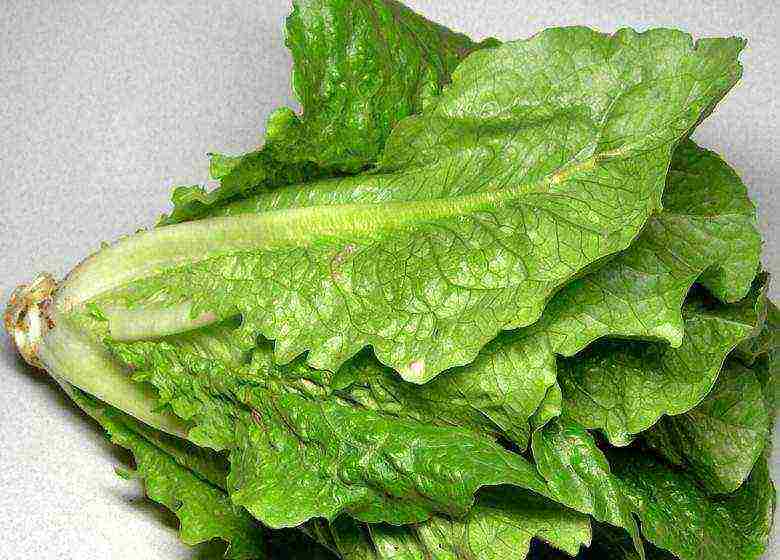
Greenhouse salad
In a greenhouse, lettuce is planted in prepared loose soil. A distance of 10 cm is maintained between the rows.The seeds are injected to a depth of 1-2 cm.
The soil is watered abundantly 1-2 times a week with cool water. In this case, you must try not to wet the leaves. During the vegetative development of the plant, the soil is fertilized 2 times with a mixture of ammonium nitrate and potassium chloride. A prerequisite is weeding and weeding.

You can re-plant the salad on the site after 2 or 3 years, pre-fertilizing the soil. Lettuce needs plenty of diffused sunlight and good hydration.
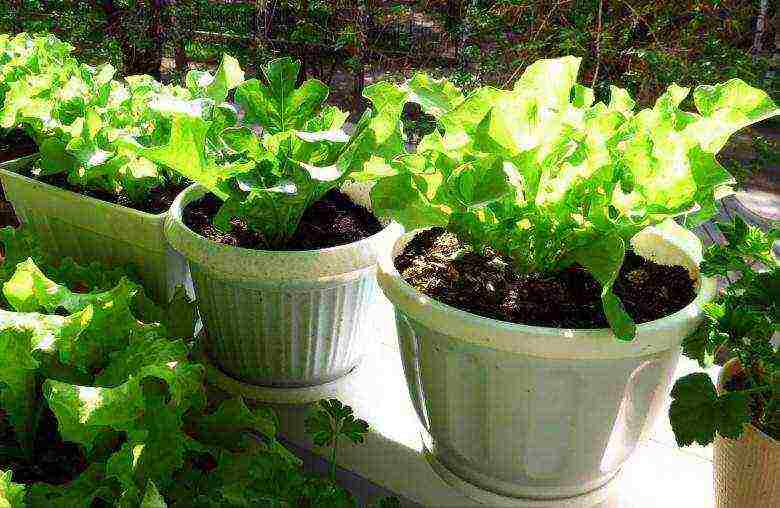
It is important to ventilate the seedlings if they are under the film, but make sure they do not freeze. Ventilation can be increased starting from a few hours.
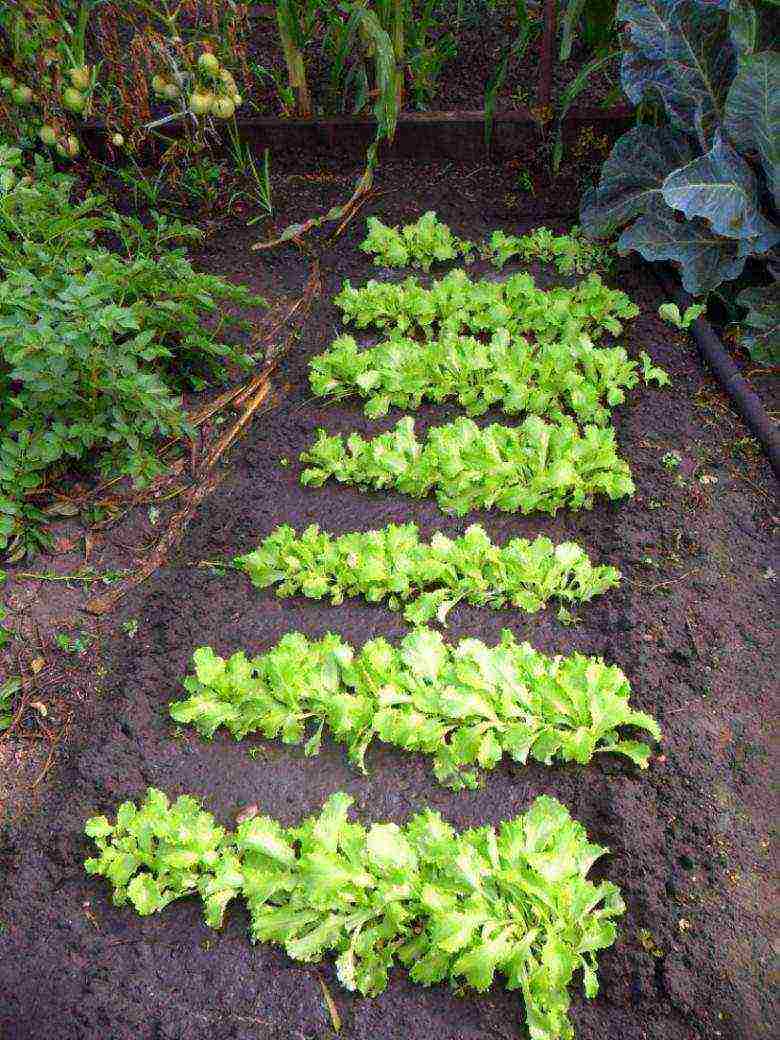
Growing lettuce from seeds is easy and affordable throughout the year.
Also see:
- Greenhouse tomatoes
- Eggplant in a greenhouse
- Onion seedlings
- Tomatoes in the greenhouse
- Seedling cabbage
- Zucchini in the greenhouse
- Greenhouse cabbage
- How to prune tomatoes in a greenhouse
- Seedling eggplant
- Greenhouse vegetables
- Sweet peppers in the greenhouse
- Radish in the greenhouse
- Dill in a greenhouse
- Greenhouse onions
- Cucumbers in the greenhouse
Photo of the process of growing lettuce
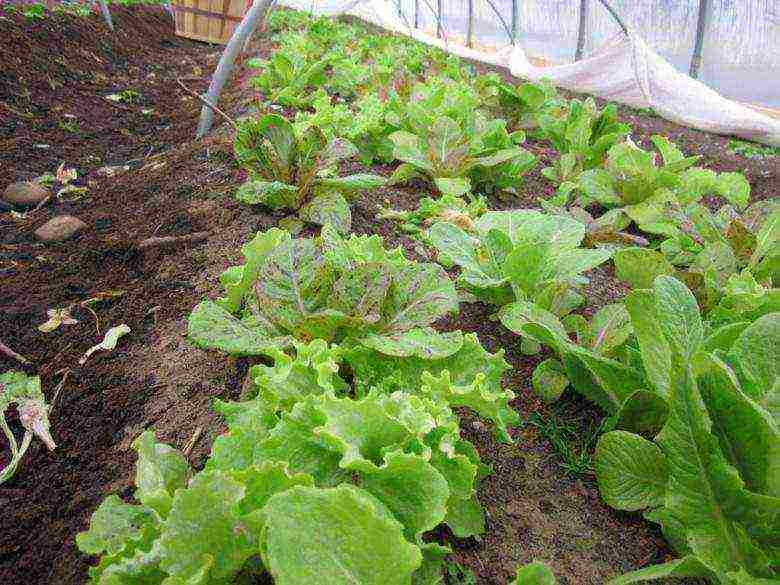

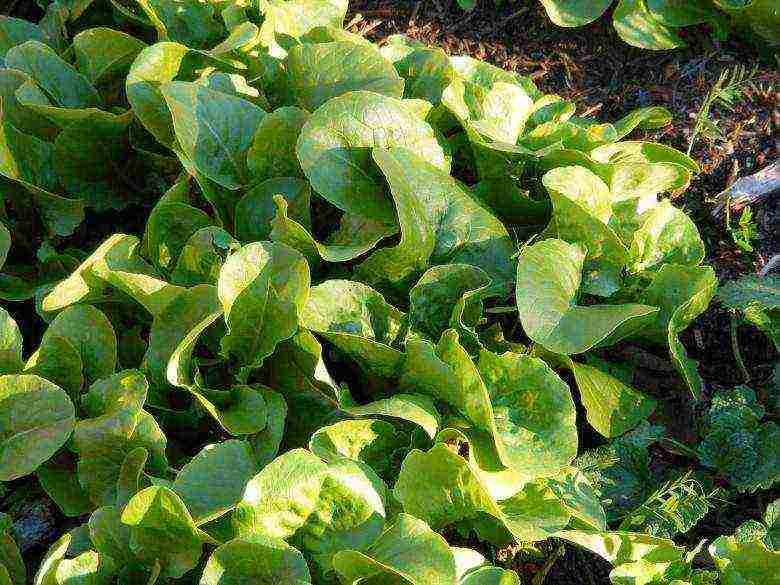
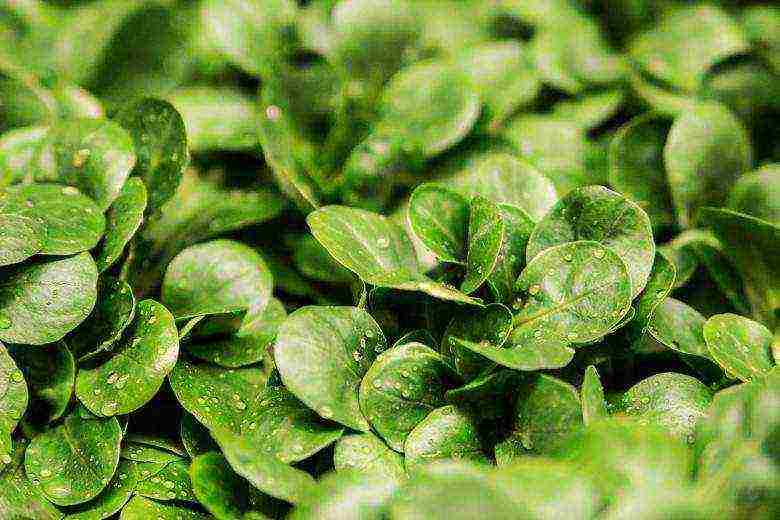


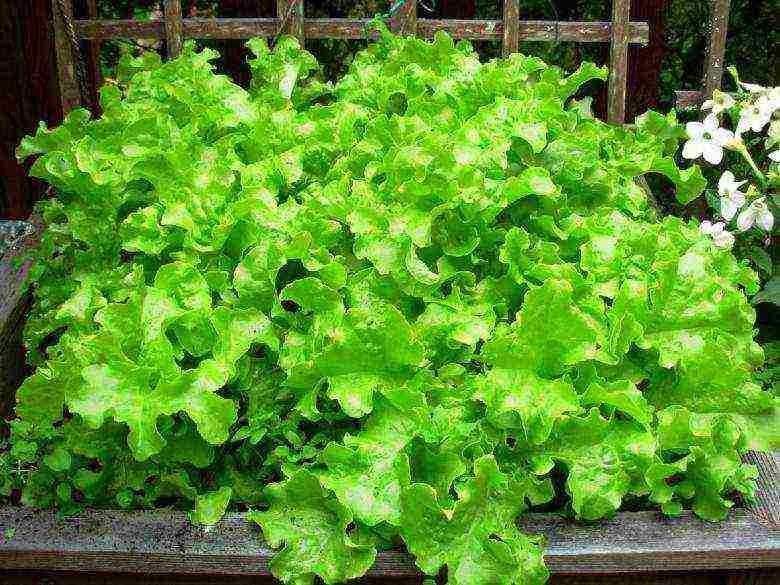

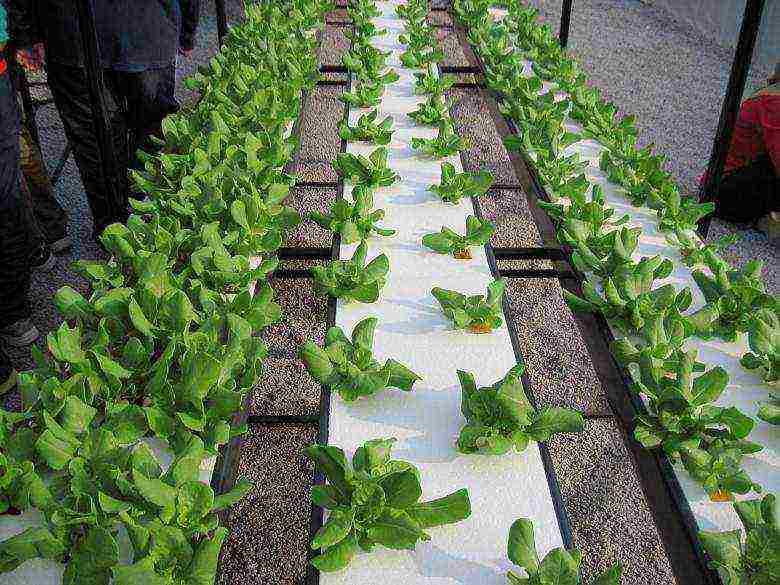
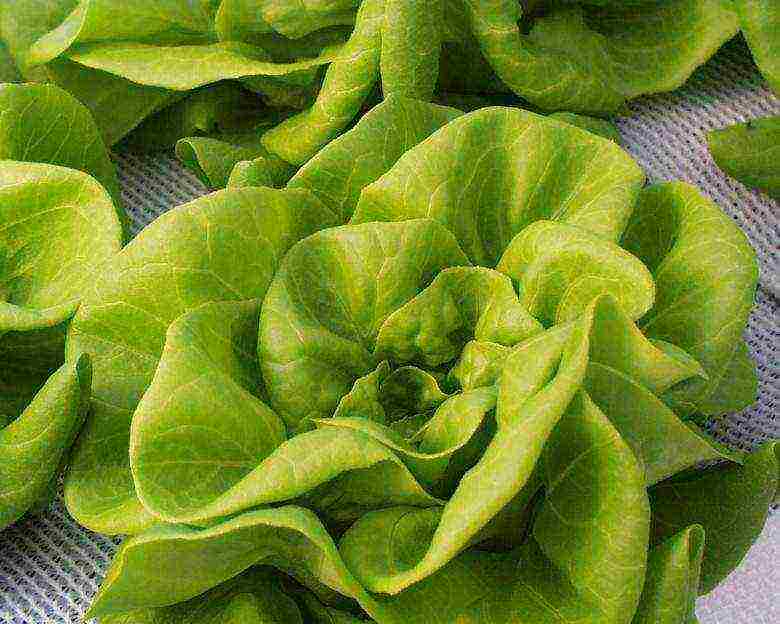

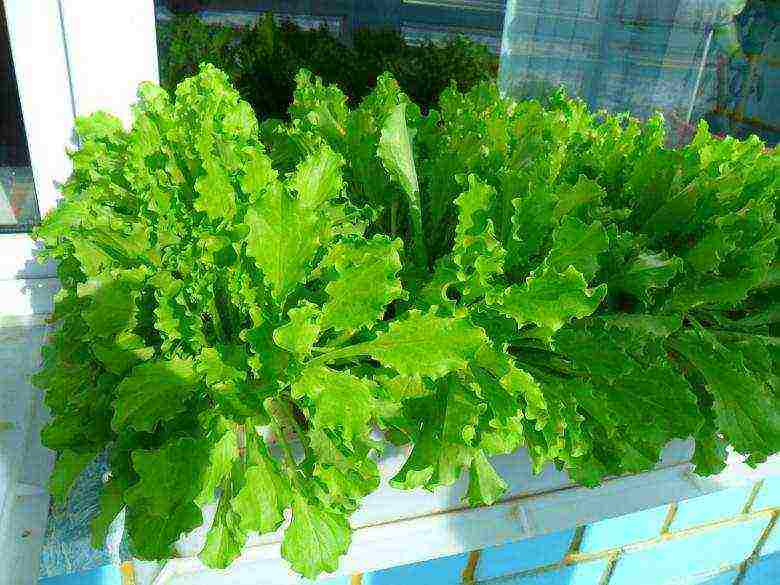


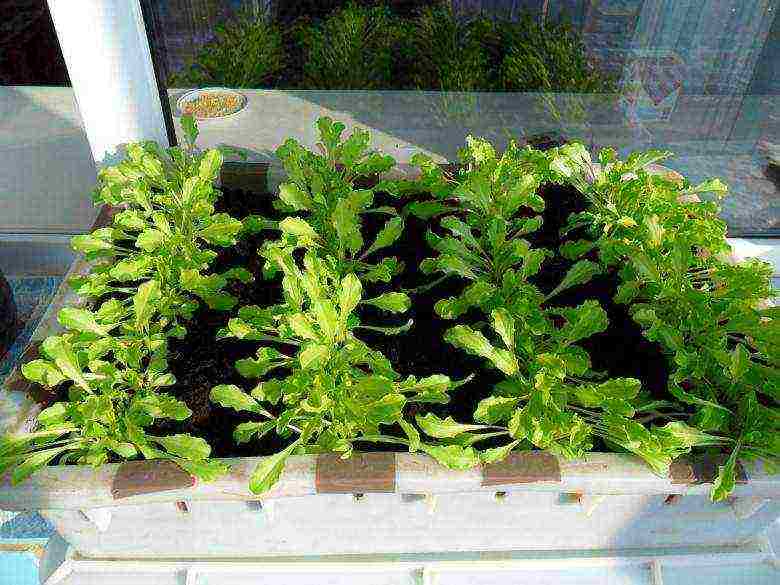
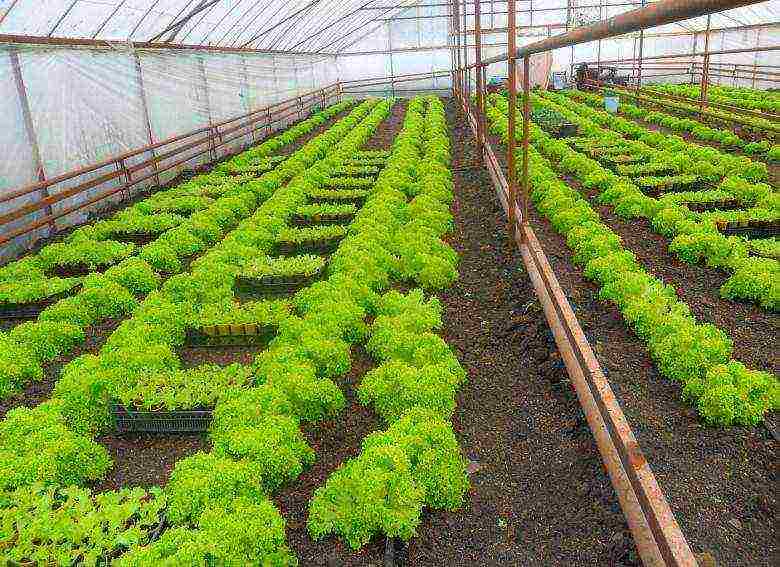
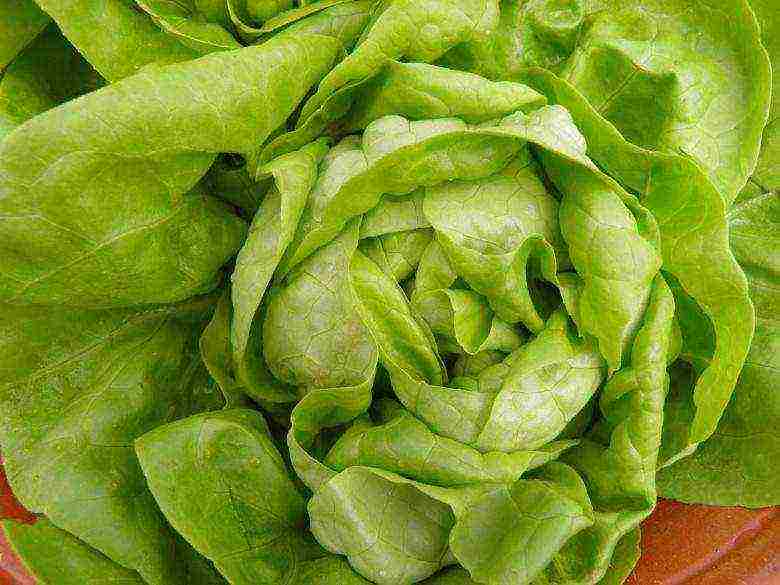
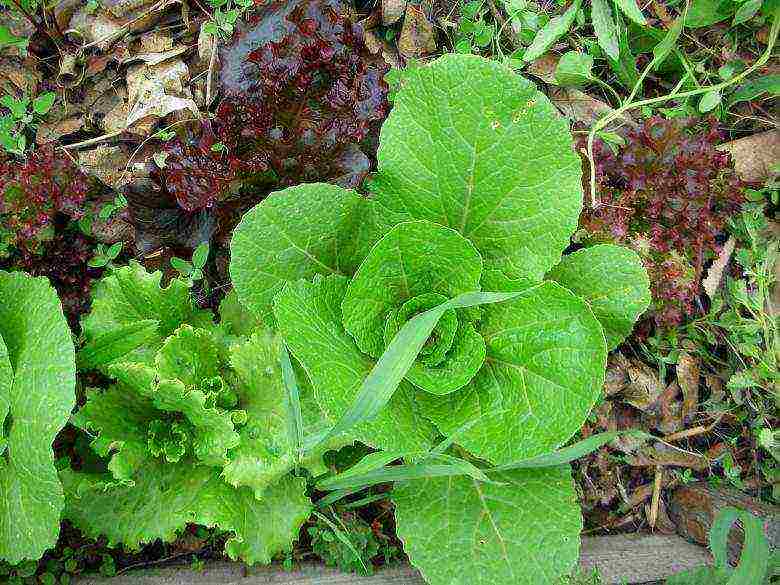


How, in winter, you want to crunch with juicy leaves of greenery, and not purchased in a supermarket with a whole set of nitrates, but environmentally friendly, just collected. In this case, you need to master the cultivation of lettuce on the windowsill, especially since there is no particular difficulty in this, because the culture is early ripening and unpretentious.
Preparing a place for a room "bed"
For each culture on the windowsill, be it parsley, dill or green onions, you need a special container. And as a dish for sowing salad, almost any container with a depth of at least 20-25 cm is suitable. These can be plastic or wooden boxes, flower pots. Green plantings look very original in ordinary kitchen utensils, which it is a pity to throw away and cannot be used, for example, an old teapot or a broken favorite cup. With this, your room "beds" will also become a design element of the interior. Just remember to create a drainage layer so that excess water runs down and does not accumulate around the roots.
Tip: in addition to traditional expanded clay, pieces of ordinary padding polyester can be used as drainage. It perfectly absorbs excess moisture, and when the soil in the pot dries up, it will give it back.
Video about growing lettuce at home
Now for the soil. Of course, it is easier to purchase ready-made soil for seedlings, but why spend money if you can save money. To grow a salad, land from a vegetable garden, flower beds or even a nearby park is quite suitable. The main thing is that it has a dense structure, because the crumbly soil with a high content of sand will dry out quickly and the moisture-loving salad may not get moisture. There will be enough nutrients in ordinary soil for the development of early ripening lettuce, but if you still doubt its fertility, then you can add a part of humus or concentrated organic fertilizer Humate. It is recommended to disinfect the prepared soil by heating it in an oven or microwave or generously watering it with a solution of potassium permanganate. In this way, unwanted microorganisms and fungal spores are killed. You need to fill the pots with soil not to the top, leave about 1.5-2 cm to the edge - it will be more convenient to water this way, and the earth pushed out by the growing root system will not fall out.
There will be enough nutrients in ordinary soil for the development of early ripening lettuce
Prepared containers with crops are placed on the southern or southeastern window sills to provide the salad with maximum illumination on short winter days.
Sowing rules and norms
It is possible to get a good harvest of lettuce in a limited amount of soil only if the sowing norms are observed. This is especially true of leafy or cabbage varieties, the excessive thickening of which does not allow the rosette to form safely.
Sowing lettuce into boxes, leave at least 10 cm between the rows, and the seeds are buried no more than 0.5 cm. Following these tips, we proceed to sowing:
- water the soil before sowing or moisten it abundantly from a sprinkler;
- the surface is leveled and shallow grooves are made using a wooden stick;
- sow seeds, leaving 2-3 cm between them - as the outlets grow, the extra ones will break down for consumption, and the rest will continue to grow;
It is possible to get a good harvest of lettuce in a limited amount of soil only if sowing norms are observed
- now the box is placed in a warm place and covered with a piece of glass or wrapped in transparent plastic wrap to keep moisture better and the seeds germinate faster;
- after the first shoots appear, they are transferred to the windowsill, to a cooler and well-lit place.
In the future, simple care and care of crops will bring the first harvest of tender, juicy, environmentally friendly greenery.
Crop care and harvest
The main conditions for growing moisture-loving lettuce are regular, moderate watering. Young plants do not need much water, but as they grow, the frequency and volume of watering will increase.
Temperature conditions are also important. We prefer the coolness of the salad, but a temperature rise above + 15 ° C leads to drying out of the tips of the leaves, loss of taste and will most likely provoke the shooter's rosette. Therefore, it is better to place containers with crops on a loggia, a glazed balcony, on a window in a corridor or on a veranda, where it is not hot and the temperature does not drop below + 5 ... + 7 ° C.
And a few more words about illumination. With spring crops, lettuce seedlings will have enough natural daylight. But in late autumn - early winter, when daylight hours are minimal and the weather is cloudy for most of the time, additional lighting will be required, otherwise the plants will stretch out and you will no longer grow a juicy green mass.
With spring sowing, lettuce seedlings will have enough natural daylight
Mineral dressing for the salad is not needed, the nutrients contained in the soil will suffice for its short growing season. It is unreasonable to use traditional organic fertilizers in an apartment because of the characteristic smell. The only way to "support" the growing salad sockets is to add the same Humate during watering - it is useful, harmless and does not smell, but you can do without fertilizers altogether.
With proper care, the first crop can be harvested in about three to four weeks. Of course, in leafy or head lettuce varieties, you can pinch off the first crispy leaves even earlier and use the greens gradually, without waiting for the formation of a full-fledged rosette. And by sowing seeds periodically, at intervals of 1-2 weeks, you will provide your family with fresh greens during the entire cold period.
Features of growing watercress
An almost win-win option to get fresh greens in winter, and besides, without any hassle, is watercress on the windowsill. It can be successfully grown in any small bowls or dishes, on trays, or even just in a shoe box lid covered with polyethylene. It is even easier with the substrate: it can be a 2-3 cm layer of ordinary soil, peat or even sawdust. If this was at hand, then a soft cloth folded in several layers, paper towels, ordinary table napkins or sponges, for example, moistened with water and laid in a plate, are suitable for seed germination.
Seeds of watercress are sown densely enough so that the growing tender stems support each other and do not fall. Seedlings appear faster than those of leafy varieties, no later than 5-7 days, and the seedlings themselves are more patient with the growing conditions - the cool air is favorable for them, + 15 ... + 17 ° C, the air at the window, and the meager winter sun is enough for them ...
Video on how to grow watercress
Advice: children are especially enthusiastic about home "beds", and if they are entrusted with growing tender greens on their own, then they will eat it with great appetite!
The main thing in growing watercress is in no case to prevent the soil from drying out, which can quickly and irrevocably destroy crops, but the stagnation of excess water also leads to root rot.
The first crop of watercress is harvested when it grows to 8-10cm. Plants are carefully cut with scissors just before eating - such greens are stored for a short time. Considering that almost all varieties of watercress grow quickly, it is recommended to sow them every 3-4 days so that the delicate greens on your table are not transferred.
Rate the article:
(0 votes, average: 0 out of 5)


